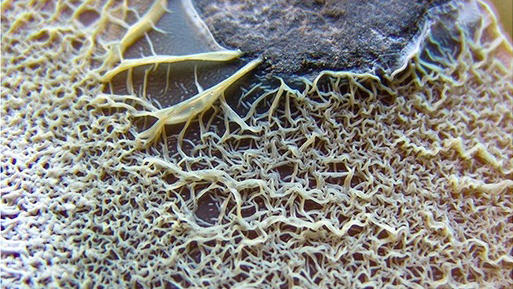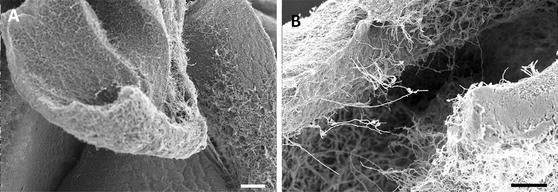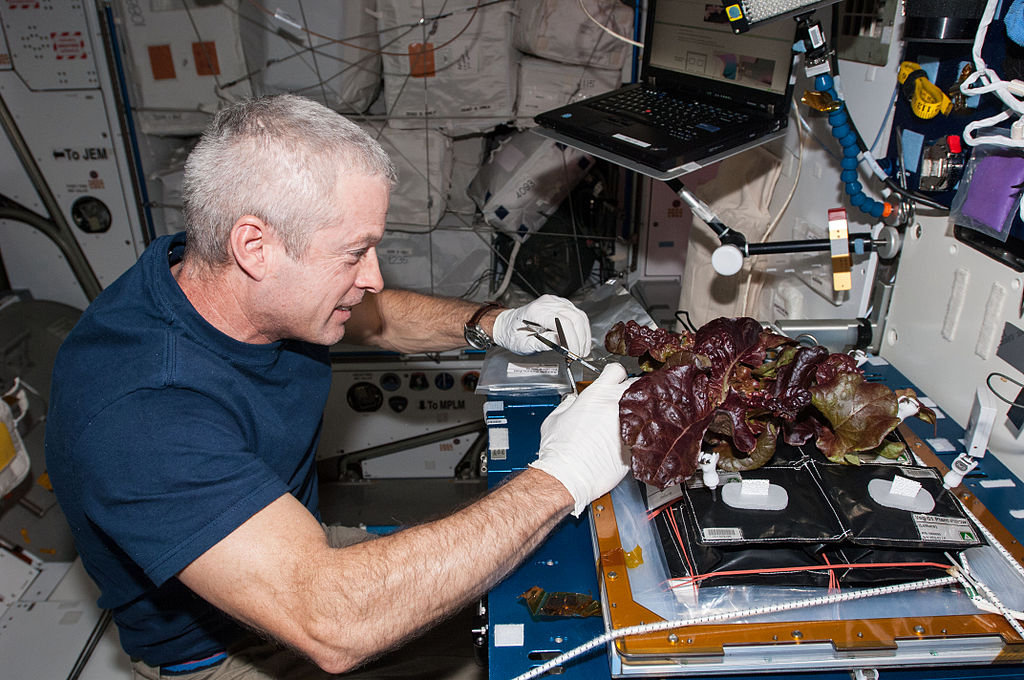
© Jones et al/eLife under CC BY 4.0
We live in a world where we’re recognizing and discovering an ever-more complex and interwoven web of life—this vast ecology of our planet. We can see that life has taken many different routes to find success, and we call these paths ‘kingdoms’: animal, plant, fungui, protist, archaea, and bacteria. While we belong to and often focus on the first kingdom—that of animals—we are at what is only the beginning of discovery of the benefits we can reap from those in the last kingdom; we can harness the potential of bacteria to our good.
I want to tell you all about the bacterial genus Streptomyces. The genus is noted for the scent of their spores. You know that smell after a rain? That’s ‘petrichor’, ancient Greek for ‘rock’ and ‘ethereal blood of the gods.’ This smell is from a mix of compounds, but a significant contributor is geosmin, itself a by-product of the hydrophobic spores atop the aerial growth of this filamentous bacteria are launched from the earth with the force of raindrops striking the ground. The average human nose is incredibly sensitive to this chemical; we’re able to notice it as faintly as three parts-per-trillion—like a single drop in 40 Olympic swimming pools! Geosmin is also the reason we like the smell of freshly-dug earth, and it’s responsible if there’s a ‘muddy’ taste in your fish.
But there’s plenty more to love than just a pleasant smell. Most of its many, varied species are found living in soils the world over. They are commonly aerobic and produce exudates which resemble mycelium-like networks throughout the substrate in which they live. These exudates and the volatile organic compounds they off-gas are created in a category called secondary metabolites.

By Anne van der Meij, Joost Willemse, Martinus A. Schneijderberg, René Geurts, Jos M. Raaijmakers & Gilles P. van Wezel - [1]doi:10.1007/s10482-018-1014-z, CC BY-SA 4.0, https://commons.wikimedia.org/w/index.php?curid=94443322
Living organisms create secondary metabolites as interactions with their environment. These compounds are not strictly required for survival. Sometimes called ‘relational’ or ‘ecological’ interactions, because it’s facilitating the meeting of the lifeform with the greater world. Contrast this to primary metabolites, which are required for growth, development, and reproduction.
How Streptomyces offers such tremendous potential
- The great genetic variety it holds as the most populous genus in its phylum, with more than 700 species cataloged thus far. There are even species which rank among the longest genomic strands in all the bacterial kingdom: S. violaceoruber with 8.7 million base-pairs (Mbp) and S. scabiei at a whopping 10.1 Mbp.
- Add to this the knowledge that Bacteria have more protein-coding genes from Eukaryotes, and that that gulf widens as genomes lengthen, and we find a very complex and active set of organisms.
- A final point to the activity of the Streptomyces genome: it averages 12% of its protein-encoding genes dedicated to secondary metabolite production, a “high proportion” when compared to the rest of the kingdom (Nikolaidis et al., 2023). This all paints a picture of Streptomyces having a strong ability to affect the world around it.
Global focus on the genus
The discovery which launched Streptomyces into global focus was the creation of streptomycin, an antibiotic which helped treat tuberculosis. This compound was isolated from S. griseus in 1943 and won the Nobel Prize for Medicine in 1952. Various extracts and synthetizations from this genus have focused on the antimicrobial properties and their application both for human health as well as pesticidal controls for use in agricultural production.
However, the global zeitgeist of our time is beginning to focus our attention inwards, to examine what we might do to change our bodies from within to better fit their environment without. Of notable interest is what’s been termed our ‘microbiome,’ all the various microscopic life inhabiting our very bodies. We’ve already scoured the genetic potential of Streptomyces for over 100,000 applications of reducing harmful microbial activity in humans and for agricultural chemicals (Alam et al., 2022). What if there is still more to be gained from this genus, and what if the methods might be different than laboratories and synthesized extracts?
Environmental interactions between microbes & humans
Exposure to different environments and inputs can change the various microbiomes in our bodies. We know the gut microbiome is tremendously affected by both temporary and long-term dietary options (Leeming et al., 2019).
Scientific experiments continue to investigate what effects various environmental exposures have on human health. In particular, investigations into affecting the microbiome on human skin are still ongoing. Our skin interacts with the world before and one behalf of all our other organs, and so might hold great potential for affecting reactions or purposeful changes to each of our skin’s microbiomes.
One recent study (Mhuireach et al., 2022) hypothesized that the hands of gardeners would be a likely place for soil-to-skin transfer of microbial populations. Complications, including hand-washing, confound the issue. But they did find Streptomyces among the top ten most abundant genera found in urban garden sample soils! The authors go on to emphasize the importance of soil/skin contact, citing Roslund et al. (2020) who found that biodiverse playgrounds improved children’s health and immune-function. Such findings reinforce efforts— at to get children outside and interacting with curated, natural play environments.
Further reading
Read more about this research on human health and garden soil contact, fresh from Oregon State University’s Garden Ecology Lab.
And now, you can carry on with your day knowing you’ve got about as much breadth of knowledge of Streptomyces as possible without beginning to delve into specific species. Thanks for reading!









